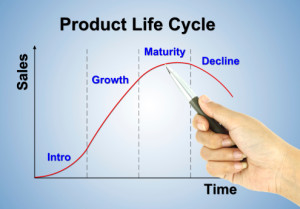Traditional marketing curriculums include a detailed look into product life cycles. And while many people may dismiss the validity of textbook reasoning, most marketers not only understand the concept around life cycles, but they subscribe to a life cycle mindset.
As many of you know, there are 4 distinct parts of the life cycle, and you can apply the strategies of each stage to just about any product or service. However, this powerful concept can also be applied to relationships, which are the cornerstone to true competitive sustainability.
The introductory phase is the period where the greatest investment and patience is needed. If you are selling product, your costs are high, your sales are slow and you probably are not making money. In turn, if you are embarking on a new relationship, the time and effort needed just to grab someone’s attention is significant. The work is hard and the fruits of your labor have yet to gel.
The growth phase is always exciting and oftentimes rewarding. There are economies of scale, and both sales and profits tend to rise. Similarly, in the growth phase of relationship building, a new level of trust emerges. The benefits of getting to know someone better are paying off for you. And while there is still a great amount of work to be done, you begin to understand that you get back what you put into any relationship.
At the maturity portion of a product life cycle, market saturation occurs and the profits reach their peak. The focus of a company usually is on efficiency, cost reduction and maximizing market share. Meanwhile, maturity in a relationship is a dangerous place. You must be astute enough to know that things have become a bit played and that you need to work hard to inject life into the relationship, or prepare yourself for some changes down the line. In other words, you must maximize your market share within your existing relationships.
The final stage of a product life cycle is decline. Prices decrease, margins shrink and the decisions about the future abound. The product can become somewhat nostalgic, or it can become extinct as new products appear. The organization must decide on new products and new life cycle curves. Subsequently, a relationship on the decline is full of difficult decisions as well. New relationships will need to be cultivated and the process starts all over again.
While the life cycle mindset can be applied to just about anything, it is important to note that great relationships don’t really have to follow the traditional bell-shaped curve. If you are willing to keep courting your markets and demonstrate sincere understanding, then your curve will remain in a constant growth phase.

